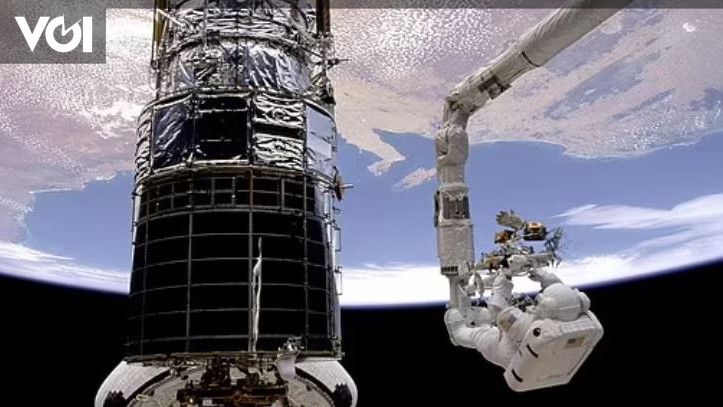JAKARTA – Now the Hubble Space Telescope is back online and functioning properly. This telescope has also taken some amazing pictures. Including the new stars emerging from the ‘star nursery’ in outer space.
Hubble’s Wide Field Camera 3 (WFC3) took pictures of the ‘star nursery’ in the constellation Gemini, about 5,000 light-years from Earth.
The nursery, known as AFGL 5180, is made up of dust and gas and is one of many regions in space where stars are born.
Image taken by Hubble’s WFC3, which captures images in both visible and infrared light, allows young stars hidden in regions such as AFGL 5180 to be seen more clearly.
“Stars are born in dusty environments and although this dust produces spectacular images, it can prevent astronomers from seeing the stars embedded within them,” NASA wrote in a statement.
The ‘Hubble’s WFC3′ instrument is designed to capture detailed images in both visible and infrared light, meaning that young stars hidden in large star-forming regions such as AFGL 5180 can be seen much more clearly.’
In the image, a ‘massive’ star begins to form and penetrates the cloud with its cavities.
The light reaches Earth by illuminating a cavity, similar to a ‘beacon through a storm cloud,’ NASA added. The constellation Gemini consists of two stars: Pollux and Castor.
Pollux is 33 light-years from Earth and is a ‘red giant star that evolved twice as large’ as the sun, NASA says on its website.
In contrast, Castor is 51 light years away and is a blue main sequence star, 2.7 times the size of the sun. Castor has at least two stellar companions, while Pollux has at least ‘one major planet.’
In June, a group of cosmic cartographers created a map of stellar nurseries, revealing how diverse the different galaxies are throughout the universe.
They looked at star-forming regions in this part of our Universe, mapping more than 100,000 nurseries in 90 nearby galaxies to provide insight into the origin of stars.
Stars form from clouds of dust and gas called molecular clouds, or stellar nurseries.
Every stellar nursery in the universe can form thousands or even tens of thousands of new stars during its lifetime.
Star nurseries live up to 30 million years, a very short time on an astronomical scale, and they are not very efficient at converting gas into stars.
– .


